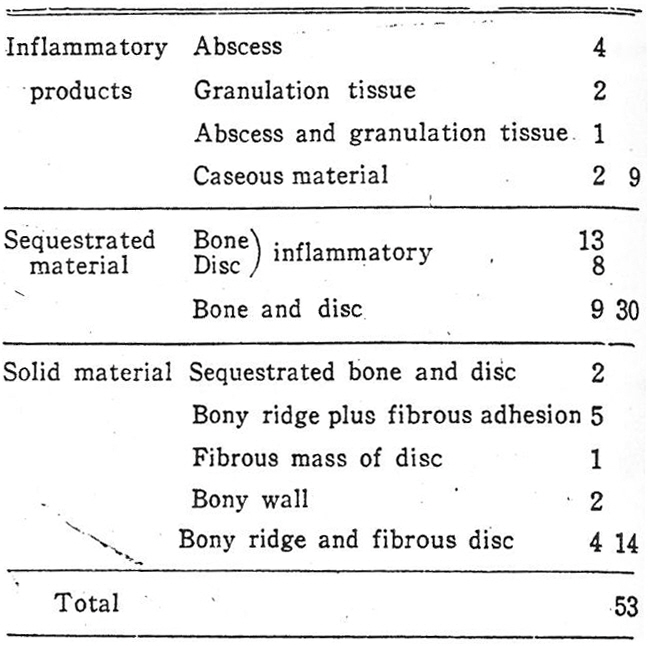J Korean Orthop Assoc.
1974 Mar;9(1):65-73. 10.4055/jkoa.1974.9.1.65.
Treatment for Pott'S Paraplegia
- Affiliations
-
- 1Department of Orthopedic Surgery, The National Medical Center in Seoul, Korea.
- KMID: 2471600
- DOI: http://doi.org/10.4055/jkoa.1974.9.1.65
Abstract
- Tuberculosis of the spine today is uncommon disease in Western Countries however it is still common disease in Korea, and it represents a important problem to the orthopedic profession. Pott's paraplegia is seen as frequently as in the previous days among the patients with tuberculosis of the spine, although antituberculous drugs have improved the prognosis and healing of the disease. In this paper the results of the treatment upon 90 cases of Pott's paraplegia treated through the year of 1969 to 1973 is reported. The treatment comprises two partly different Surgical treatment as 37 cases were operated by radical curettage (Group I) of the spinal lesion and 53 cases were operated by resection of the diseased vertebrae and simultaneous anterior spinal fusion (Group II). It was also possible to compare the results and the advantages of these two methods of treatment. 1. The thoracic spine was most commonly involved in 71 cases (79%) and the dorso-lumbar spine in 11 cases. Number of affected vertebra averaged 3.5 in group and 3 in group II. 2. There were 71 cases (78.9%) of early and 19 cases (21%) of late paraplegia. In 72 cases(80%) the paraplegia was complete and in 18 cases (20%) it was incomplete. The proportion of complete and early paraplegia was more common in adult than children. 3. The cause of the compression was observed in 53 cases operated by anterior spinal fusion. The most common compressing agent was inflammatory products and sequestrated material, 29 among 12 cases, in early paraplegia and solid material, 7 among 11 cases, in late paraplegia. 4. Altogether 64 out of the 90 cases had complete recovery of paraplegia, 19 had incomplete recovery and 7 were failures. 25 out of 37 cases in group and 39 out of 53 cases in group had complete recovery. Factors influencing the results of treatment were age, duration of spinal symptom, grade, duration and type of paraplegia, and cause of compression. 5. Collapsed lung during operation was found in one case, postoperative collapse of spine, which produced irreversible paraplegia was found in one cases in group I. Fracture of bone graft was found in 14 cases in post-operation time, and postoperative pneumothorax was found in 11 cases in group I. All these complications were healed. 6. The transthoracic approach gave an excellent possibility to inspect and remove the compressing agent and it is preferable in cases of longstanding paraplegia, where compressing agent is often formed by solid material.
MeSH Terms
Figure
Reference
-
References
28. Wilkinson M. C.The treatment of Pott’s disease by curettage of the spinal lesion. J. Bone Jt. Surg. 34-B:153–154. 1952.29. Wilkinson M. C.The: treatment of tuberculosis of the spine by evacuation of the paravertebral abscess and curettage of the vertebral bodies. J. Bone Jt. Surg. 37-B:382–391. 1955.
Article


